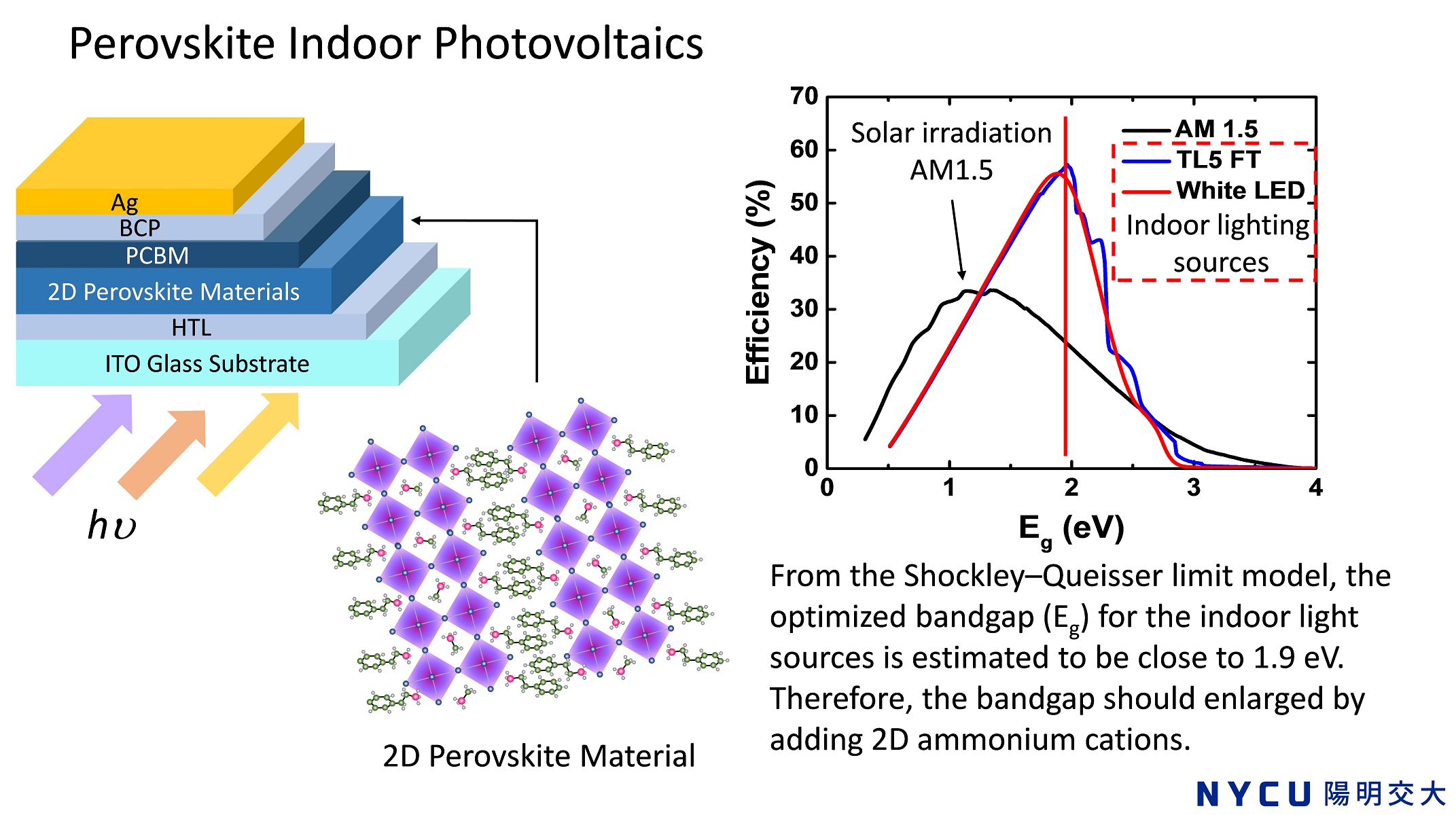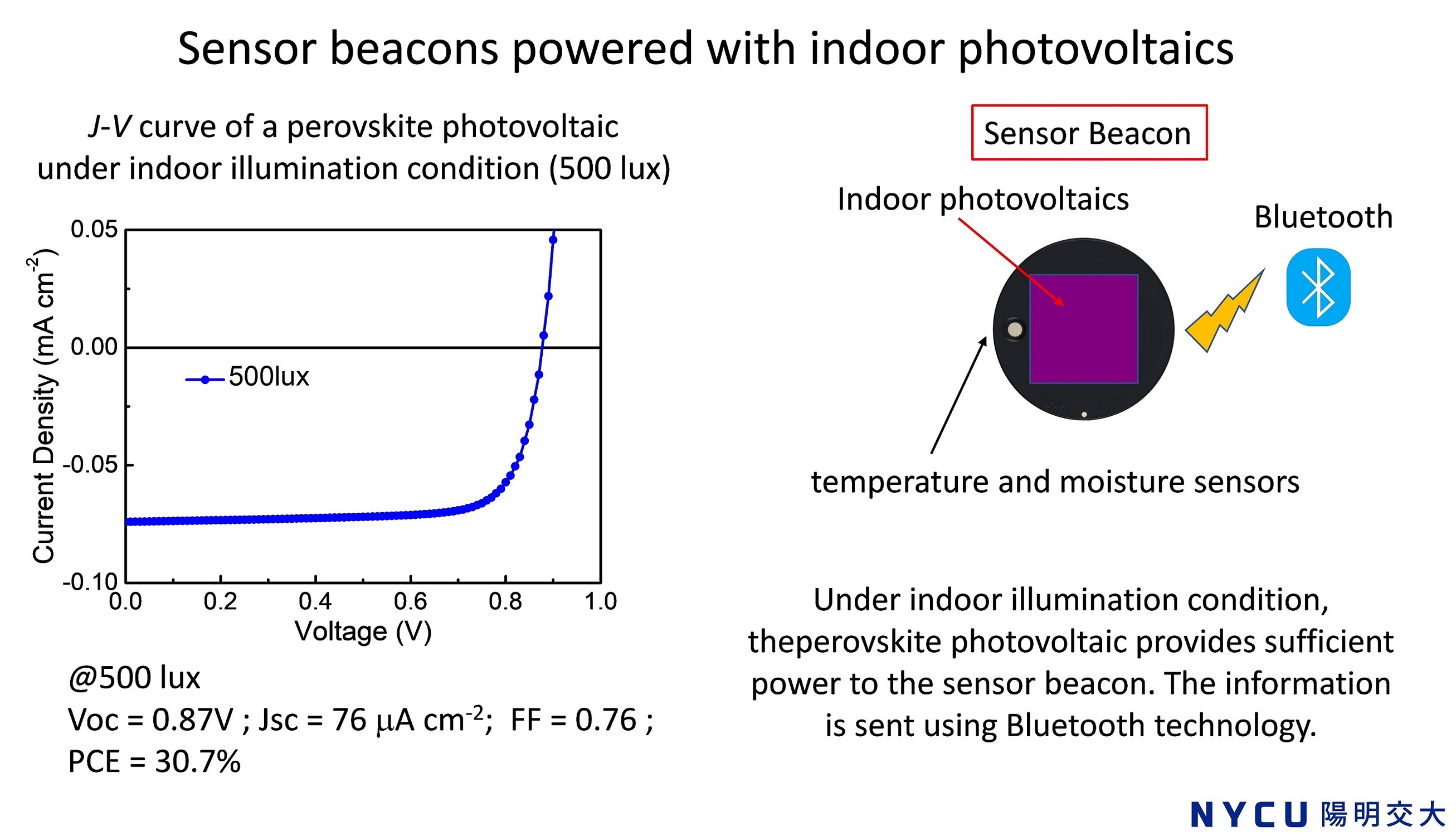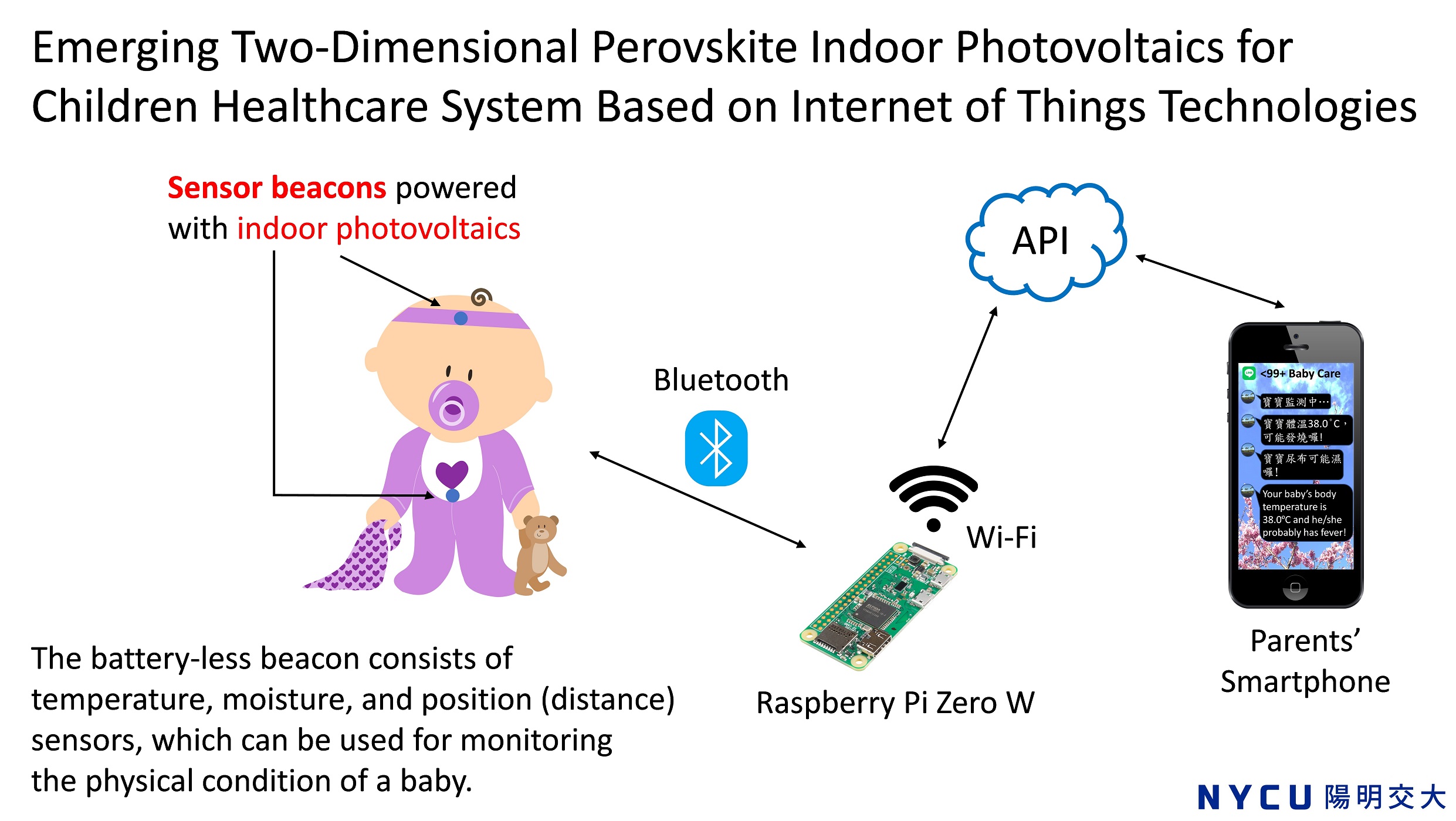| Technical Name | Emerging Two-Dimensional Perovskite Indoor Photovoltaics for Children Healthcare System Based on Internet of Things Technologies | ||
|---|---|---|---|
| Project Operator | National Yang Ming Chiao Tung University | ||
| Project Host | 陳方中 | ||
| Summary | "2D perovskite photovoltaics are fabricated with ammonium cations to enlarge the bandgap of the active materials. A power conversion efficiency larger than 30 has been achievedthe device stability is also improved after the use of 2D materials. The results indicated that 2D perovskite materials are ideal for practical indoor applications. With sufficient power supply, a children healthcare system based on IoT technologies is demonstrated. The indoor photovoltaic module prepared with 2D perovskite materials can supply sufficient power to a beacon under normal indoor lighting conditions. The battery-less beacon consists of temperaturemoisture,position sensors, which can be used for monitoring the physical condition of a bab |
||
| Scientific Breakthrough | Conventional photovoltaic devices, such as crystalline Si cells, exhibit poor power conversion efficiency (PCE) under indoor lighting. Many applications, however, require efficient light harvesting ability under dim-light conditions. Perovskite solar cells are found to be especially suitable for indoor applications. Previously, we found that the bandgap (Eg) for the current perovskite materials is too small for indoor light sources. Herein, we adopt 2D perovskite materials to fabricate perovskite photovoltaic devices with larger Eg values. A PCE larger than 30 has been achievedthe device stability is also improved after the use of 2D materials. The results indicated that 2D materials are ideal for practical indoor applications. |
||
| Industrial Applicability | "Harvesting photonics energy has been considered as a promising method for improving the sustainability of many modern electronic systems, including portable electronics, wearable electronics, the internet of things (IoT). Because these systems probably feature large numbers of wireless sensors and/or actuators, the low-cost, emerging photovoltaics we demonstrate here can be used to power various electronic devices for these systems. The children healthcare system based on IoT technologies can be operated under normal lighting conditions. The battery-less beacon consists of various sensors, including temperature, moisture,position (distance) sensors, which can be used for monitoring the physical condition of a baby." |
||
| Keyword | internet of things healthcare perovskite photovoltaic solar cells beacon sensor 2D materials wearable electronics children | ||
- Contact
- Fang-Chung Chen
- fcchendop@nycu.eud.tw
other people also saw







